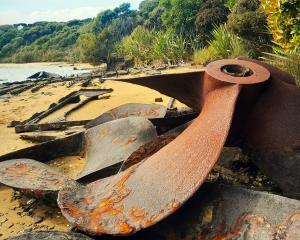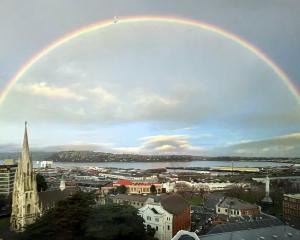A little more than a decade later, his parents, Percy and Lucy Sargood, approached the company which had staged the New Zealand and South Seas Exhibition with an offer to buy the exhibition's art gallery for 4000. They then donated it to the city as a public art gallery in memory of their son.
This gift, matched pound for pound by the sale of the art gallery society's Settlers Museum gallery space, meant the city's collection could be moved out of those cramped conditions to the purpose-built, airy spaces of the Logan Park building.
Percy Sargood (knighted in 1935), was born in Melbourne, the second son of a distinguished Victorian politician.
At 18, he entered his father's warehouse business and in 1891 arrived in New Zealand as manager of the Christchurch and Dunedin warehouses as well as the firm's boot factory.
Eventually he took over full control of the New Zealand clothing and footwear business named Sargood, Son and Ewen.
Sargood had been brought up in a tradition of community service. He established one of the first staff provident funds, served on patriotic committees during both world wars, was a member of the Dunedin Unemployment Committee in the 1930s and supported youth organisations such as the Boy Scouts and the YMCA.
In 1912 he bought Wanaka Station and soon after planted 8000 fruit trees to demonstrate that the country, when irrigated, was ideally suited to fruit growing. His faith in the future of Central Otago also made him a major shareholder in the Cromwell Development Co, which irrigated the lower part of the Cromwell Flat and developed it as a sheep farm.
In Dunedin, his stately home, Marinoto, was a popular venue for fundraising garden parties.
Together with his wife, he collected fine art and was a major contributor to the original Dunedin Art Gallery, established in 1884.
He also founded the Empire Loan Collections Society, which organised the circulation around the Commonwealth of major artworks usually held only in Britain.
After his death in 1940, his will bequeathed a considerable portion of his collection of artworks, sculpture and artefacts to the Dunedin and Wellington art galleries and to Otago Museum, and in 1951, his wife funded the construction of a new wing at the Logan Park gallery.
The Sargoods' contribution to art in Dunedin - in the order of many millions of today's dollars - continues through a charitable trust established by Sir Percy in 1939. The Sargood Bequest helped relocate the Dunedin Public Art Gallery from Logan Park to the Octagon in 1996 and continues to fund acquisitions and specialist curator equipment. It has also supported many other cultural, sporting and youth organisations.











